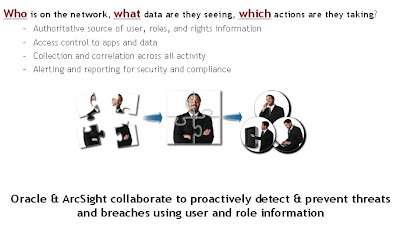Compelling reasons for focusing on Enterprise Security from independent analysts Forrester & PricewaterhouseCoopers
As illustrated recently in the CIO magazine article “Why Security Matters Now” By Bill Brenner, PwC's CIO Survey illustrates that while IT departments, CFO's, and CEO's are looking carefully for any opportunity to cut costs, they are still reluctant to slow spending increases in Information Security.
So why can't they curb spending growth on IT Security?
With the explosive growth in adoption of Social Networking sites/tools and Cloud Computing Services there is an ever growing threat for security risk and data security leak.
While these are the most compelling, innovative, and revenue driving technologies … they cause the biggest heart burn. Twitter, Facebook and LinkedIn drive collaboration, help organizations connect with customers, partners, etc. … But they also simplify fraud, data & identity theft, or just make it easier to make mistakes.
While leveraging virtualization & cloud services allows organizations to cut costs and simplify their physical IT infrastructure, it also opens up the pandora's box of new security and management issues. Driving your infrastructure towards the cloud has left you vulnerable to attacks and professional hackers have redoubled their endeavors to use these weaknesses against the big names like Google, Yahoo, etc. but also their enterprise customers.
So where is the good news?
Despite the arguably worst economic down turn in decades, organizations are spending more on in-house security solutions. Security budgets are holding steady, and more organizations are employing a chief security officer (CSO) and/or chief information security officer (CISO).
PwC's 7th annual survey including input from nearly 7,300 executives worldwide across industried including financial services, health care, retail, government, and so on. The result was a clear indication that organizations are investing in data protection and authentication including:
1. Biometrics
2. Web content filters
3. Data leakage prevention
4. Disposable passwords/smart cards/tokens
5. Reduced or single-sign-on software
6. Voice-over-IP security
7. Web 2.0 security
8. Identity management
9. Encryption of removable media
So who are they turning to?
According to Forrester Research and their recently updated Wave Report on IAM, there is a clear preference for Oracle as the leader and innovator in the the space.
Their positioning of Oracle was driven by their leadership in product functionality/depth but also overall depth of the suite. They highlight how Oracle is the only vendor that has adopted an externalized Entitlements Solution and continues to deliver on it through Oracle Entitlements Server (OES), Formerly BEA AquaLogic Enterprise Security (ALES). Also the commitment to Risk-Based Authentication through Oracle Adaptive Access Manager (OAAM) and the integrated solution for Data Security, Oracle Information Rights Management (OIRM).
To see the CIO article
http://www.cio.com/article/504837/Why_Security_Matters_Now
To get the full PwC survery
http://www.pwc.com/gx/en/information-security-survey/index.jhtml
To read the Forrester’s IAM Wave Report
http://www.oracle.com/corporate/analyst/reports/infrastructure/sec/forrester-wave-iam.pdf





